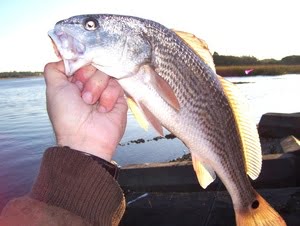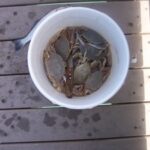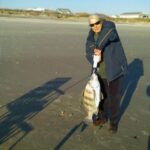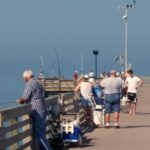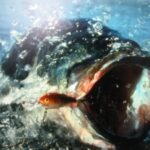It’s hard to beat live bait when saltwater fishing. The following eight live baits are all top producers for catching dinner if you’re fishing the inshore waters of the Gulf or Atlantic coast. I’ve ranked them from lowest (8) to highest (1) in terms of my personal view of their effectiveness.
8. Fiddler crabs.
Fiddlers are easy to gather (their little pinchers don’t hurt) and make a strong, cheap bait when fished near pilings for sheepshead. Hook them any old way, and use just enough lead to get the fiddler in the sheepshead feeding zone, which is usually from the bottom to halfway up the water column. They also will catch the occasional redfish, black drum or flounder.
7. Small Croakers.
Little croakers are surprisingly effective and hardy bait for big gamefish. They are especially loved by trophy speckled trout. Many folks believe the “golden” color croakers that occur in some waters are the best to use for bait. They are also very good for big doormat flounder. In some states you can’t use them, though, as croaker come with a size limit of their own.
6. Sand fleas.
These little diggers are beloved by kids who like to gather them at the surf line. If you have some youngsters get them out there with a bucket, since sand fleas (sometimes called sand fiddlers) make great baits for the delicious pompano. If you don’t have kids around they can be gathered up with special rakes available in coastal tackle shops. In addition to pompano, sand fleas will also take sea mullet (whiting) and the occasional flounder.
5. Pogeys.
Actually little menhaden, these numerous, delicate baitfish don’t live long in a bucket or live well, but they are a top bait for slashing bluefish and big flounder. Just remember to add some action to the bait, since pogeys die quickly once they’re cast out. Hook them through the eyes and they’ll live a little longer.
4. Mud minnows.
There are a lot of little shallow-water baitfish that fall under the catch-all category of mud minnow. One of the big advantages of mud minnows is that you can buy them at coastal tackle shops and pier houses, in case you can’t find any bait in your cast net or don’t know how to use one. They are also very hardy and will outlive most critters in your bait bucket, as well as surviving in freshwater. Mud minnows are a top bait for the bottom dwelling flounder, and will also take loads of redfish and speckled trout.
3. Pinfish.
Few folks understand that these pesky little critters make excellent live bait for large gamefish. They can be fished under a cork for trophy speckled trout, but their best use lies on a bottom rig. Big doormat flounder just love a flashing little pinfish. Hook them around the tail for maximum action.
2. Live shrimp.
Nothing beats a live shrimp fished under a float or popping cork for speckled trout. Live shrimp are such a great speck bait that in some places government agencies have actually considered making their use illegal. Make sure to avoid the dark ‘brain’ area around the horns when you hook them. In addition to specks, live shrimp take tons of redfish, gray trout, sea mullet and sheepshead. They can also be fished on the bottom for black drum and flounder.
1. Finger mullet.
Everything wants to eat the frisky, jumping finger mullet. The smallest version of the striped mullet, these little vegetarians at the bottom of the food chain are loved by roaming game fish, bottom-dwelling crabs, and high flying birds. When a ‘mullet blow’ is in season hordes of jumping finger mullet schools whisk through inland waterways and the surf line. Hook one just above the eyes and toss it out on a simple rig (with no wire, spinners, or floats). There’s no better bait for roaming redfish, bluefish, and flounder.
Reference:
- Cast Nets Useful To Saltwater Anglers
